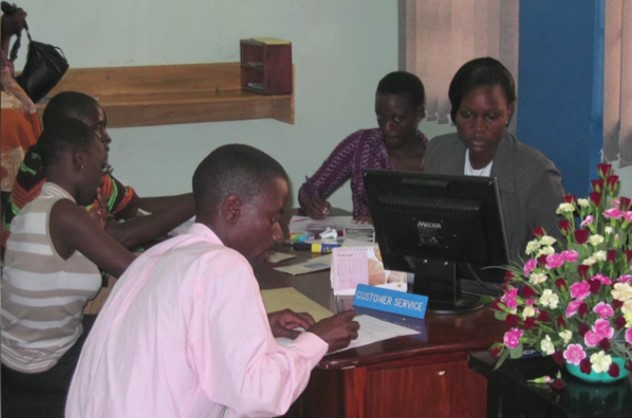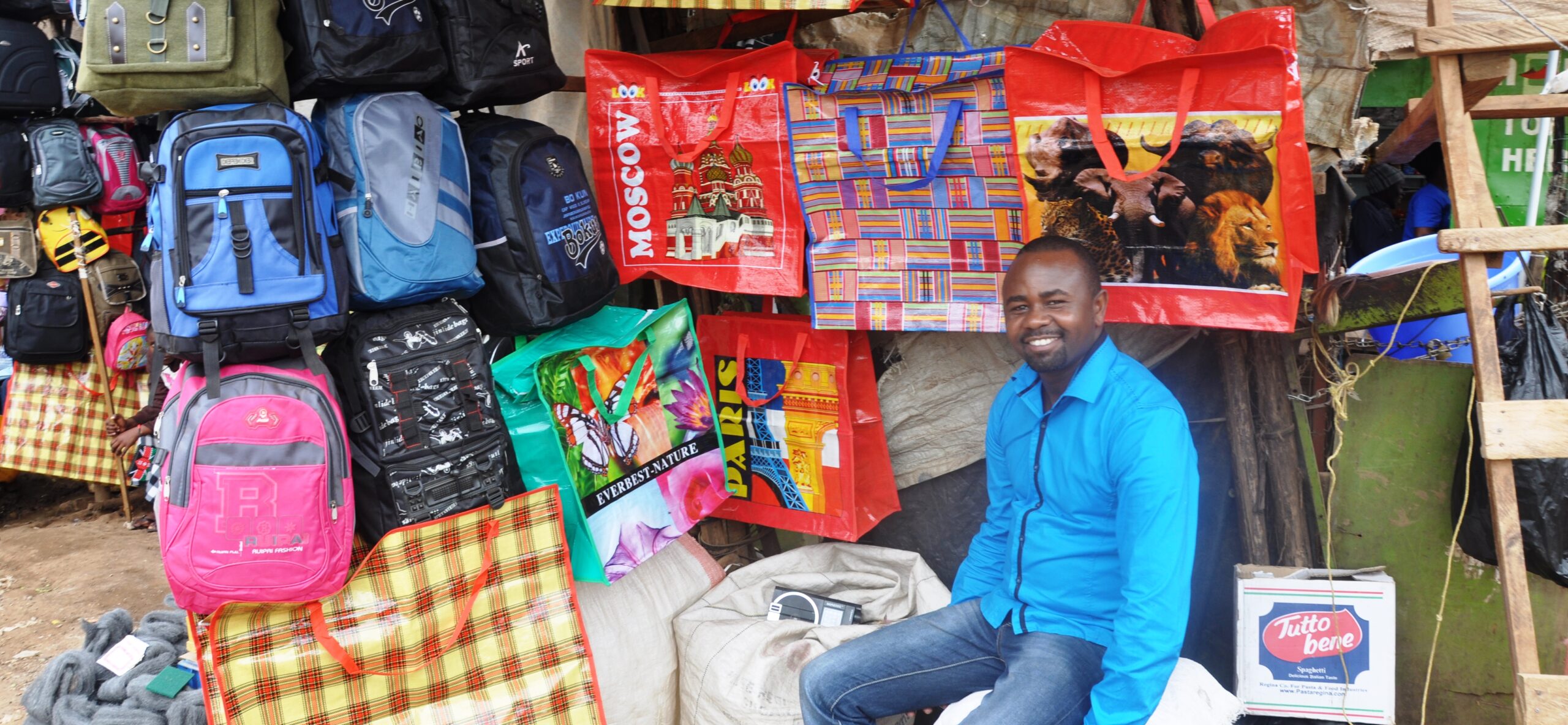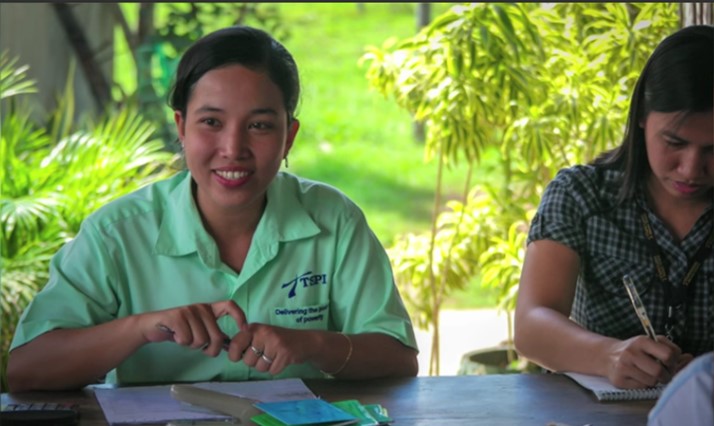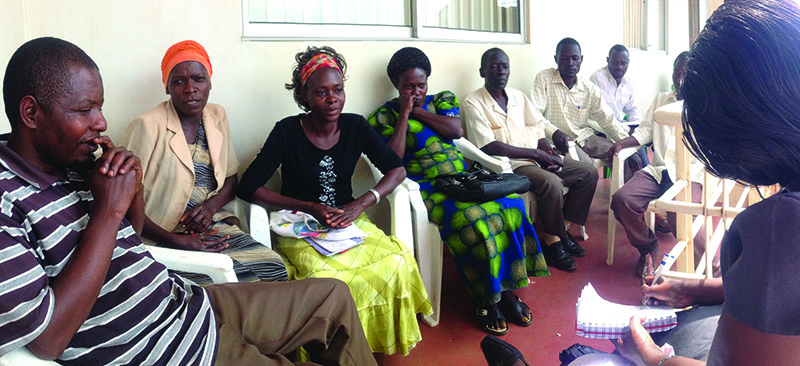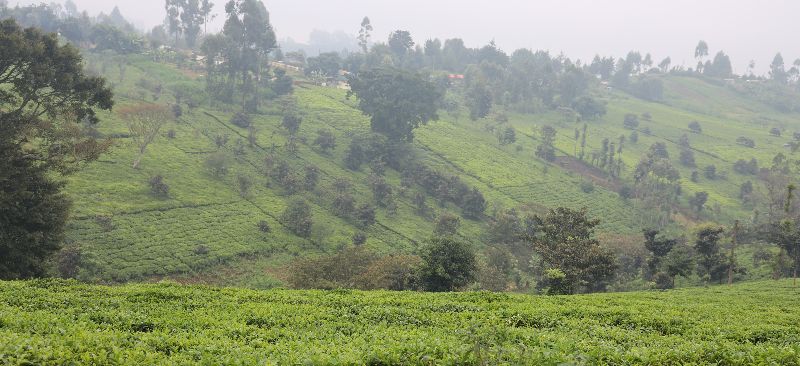In this video, Manoj K Sharma, Director, MicroSave presents the business case and market opportunities for the banks and financial institutions to focus on the underserved MSMEs (Micro, Small and Medium Enterprises) markets. He highlights on the level of exclusion of MSMEs in terms of access to finance and compares it to large enterprises and corporates who have access to a range of financial products. He also highlights on the need of upscaling efforts by MFIs to meet the needs of MSME markets. Adding further that how the banks should go about downscaling in the MSME markets.
Blog
More small business loans — and why they matter
MicroSave recently completed a research study on MSMEs (micro/small/medium-size enterprises) in Uganda, and the dilemmas most face with regard to financing and capital management. And these dilemmas are by no means unique to Uganda.
Small businesses have long been, it would seem, the darling of microfinanciers, the international donor community, and others interested in supporting the growth of developing economies. “MSMEs and microfinance” yields 700,000 Google results—everyone, from the Aga Khan Foundation to the Asian Development Bank to business schools on every continent, is studying the needs and investment potential for this particular segment. MSMEs are also the principal employers in most emerging markets and contribute significantly to both GDP and GNP.
So why is it so very difficult for most of them to get bank and other financing to expand and grow their businesses? In both Asia and Africa, our research shows that financial institutions fulfil only 9-20% of these needs. Most MSMEs rely most of the time on self funding, borrowings from friends and family, supplier credit, and other informal credit sources.
One reason, of course, is encroaching globalisation. For years, India has protected the local corner Kirana (mom and pop store) shop from foreign “big box” competitors, and Prime Minister Manmohan Singh’s decision last November to ease those protections in favour of the large-scale efficiencies Walmart and other global retailers offer remains highly controversial. This is an issue all policy makers in comparable economies debate as multinational chains, whose business depends on volume, turn eagerly to the untapped and ever-growing markets in the South and East.
This isn’t the only problem MSMEs face, however. Our work in Uganda and Rwanda, and MicroSave’s focus on small businesses in many other locales, reveal that segmentation—or lack thereof—is also a strong deterrent to financing. Often lumped together as one type of business, albeit highly diverse, MSMEs are seen as homogenous – they are not. High level and general categories that we have analysed in these two countries, for example, include:
- Wholesale and retail trade–food, beverages, clothes, stationery
- Manufacturing–wood and metal-related
- Restaurants and hotels
- Education—schools
- Health–pharmacies and clinics
Manufacturing obviously has little overlap with restaurants in terms of financing. And clinics and schools fall into a completely separate category from the others on this list—although both emerge as high-growth, promising sectors in this part of Central and East Africa. Further segmentation includes, of course, size (“medium” means up to 250 employees in some countries and only 50-70 in others, according to the OECD) and revenues.
The principal risks—competition, employee capability, market downturns, weather in the agricultural segment—also have a very different impact on an enterprise of less than 10 employees in a remote, rural area from 50+ employees in heavily trafficked urban neighbourhoods. Segmentation helps the financial institution to transform what is otherwise heterogeneous MSME market into more identifiable groups, and to develop products and services that meet their specific needs. A financial institution that has insights into the segments and understands their business requirements, can engage more effectively with the prospective market. It can develop staff with specialised knowledge of the opportunities and challenges associated with specific segments allowing better informed and more robust lending decisions.
At least one Ugandan bank manager agrees. “In the past, we had not looked at the market from the perspective of segments and hence we were approaching any and every MSME in the same way, “ he told us. “What we have learnt is that the segmentation approach helps us to identify the needs in detail, develop products accordingly, and customise the [credit] processes for each segment.”
In Rwanda, still primarily an agricultural economy, the MSME segments noted above nevertheless comprise 62% of the country’s GDP – the estimated value these employees contribute to the total worth of production and services.
This is unlikely to change soon in most large and small developing countries—with or without the encroachment of Starbucks, McDonald’s, Wal-Mart, France’s Carrefour, or South Africa’s Shoprite. Infrastructure, including power and telecommunications, remain too unreliable, and legal vagaries such as land ownership and taxation are too uncertain, for most conglomerates to be moving beyond the “exploratory phase” at present.
In the meantime, MSMEs need more capital to help support their local economies. We look forward to more progress in Uganda, Rwanda, and other countries where small businesses are still an integral and potentially flourishing part of their nations’ growth.
MFIs and Digital Financial Services: Why MFIs?
MFIs are considered pioneers in enabling financial access to low income customers worldwide. However, they have been by and large absent from the emerging narrative of technology enabled financial services facilitated by innovative use of e/m-banking mechanisms. In this video, Denny George examines why stakeholders should take a fresh look at MFIs and their capability to enhance financial access. In the video, we examine the core strengths of MFIs which can potentially be leveraged to enable delivery of digital financial services.
Financial education – Time for a re-think?
Traditional financial education both in poor and rich contexts have taken a didactic, class-room based approach to conveying analytical financial concepts like budgeting, saving, managing debt, and calculating interest rates. We need to re-think the process of financial education to merge it with product marketing, thus making it more relevant for customers and more cost-effective for financial institutions.
Recent research by Zollmann and Collins suggests that, particularly amongst the poor, traditional financial education is missing the mark both in terms of content and pedagogical approach:
- Content: For the poor, financial decisions are not big, infrequent analytical choices about allocating funds. Rather, financial management is a constant, inseparable cycle of earning and allocating uncertain, erratic cash flows. Managing money is all about staying disciplined. Kenyans are already quite strong at budgeting and saving; the real knowledge gaps come in understanding how financial products should function to help them stay on track and realise their short and long term goals.
- Approach: Research participants said that money management is something they would find difficult to learn in a classroom. Experience rules. People test financial products with low values and little risk to make sure the product performance conforms to their understanding before entrusting it with larger values. Frequent, clear feedback and being able to get answers seem to be key factors enabling effective product testing.
Customers learned:
- From their own experiences: Zollmann and Collins hypothesise that any intervention that helped customers learn about their own transactions, and whether their expectations of whether it works are being met, would increase use of the product. For example, if customers are able to check fees and balances in a frequent, free, convenient way, we believe they will use the product more intensively. We call this a high frequency feedback intervention.
- From the experiences of those close to them: The Zollmann and Collins piece also observed that most people tend to watch others and learn from their successes or failures. Therefore, a peer-led introduction to a product will lead to more comfort and knowledge about how the product works. We call this a social marketing intervention.
There are also challenges arising from financial education donors/sponsors who have maintained the position that financial education is a public good, and thus institutions should not use it as a platform to market their products. While this is done to protect people from exploitation by financial institutions, the downside is that it undermines the ability to fully develop people’s financial capability.
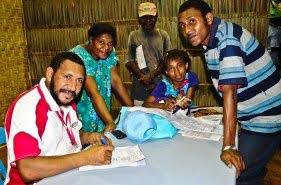 To improve financial capability, we need to understand people’s information sources and how these affect decision-making. Knowledge needs to be provided through practical exercises to facilitate an internalisation of money management concepts. This knowledge needs be supplemented with information about available products and services and how they work. This enables people make informed decisions on which products to use, and thus fully exploit them to the mutual benefit of the institution and its potential clients. Furthermore, it also enhances consumers’ financial capability since positive results should be experienced from appropriate choice and use of products and services that match people’s needs.
To improve financial capability, we need to understand people’s information sources and how these affect decision-making. Knowledge needs to be provided through practical exercises to facilitate an internalisation of money management concepts. This knowledge needs be supplemented with information about available products and services and how they work. This enables people make informed decisions on which products to use, and thus fully exploit them to the mutual benefit of the institution and its potential clients. Furthermore, it also enhances consumers’ financial capability since positive results should be experienced from appropriate choice and use of products and services that match people’s needs.
Finally, it is essential to link financial education to real products, not just because of the need to provide consumers opportunities to use and experience products, but also because this provides an opportunity to deliver financial education on a massive scale as part of product marketing efforts. The alternative is small-scale financial education delivered as part of charity or corporate social responsibility efforts – with over 2 billion people financially excluded, efforts this size do not fit the need.
We need to de-bunk, and break free from, the myths that pervaded “financial literacy” for so long!
It is clearly time to test the efficacy of alternative, experiential, product-focused financial education interventions compared to traditional financial education training. Fortunately, some financial institutions are already working somewhat along these lines. Perhaps the best example is IFMR’s KGFS.
IFMR Trust’s KGFS uses “Wealth Managers” to deliver their range of financial products to the 2,500 households served by their branches. The KGFS model is structured around the concept of financial well-being and aims to maximize the financial well-being of every individual and every enterprise. As part of the enrolment process, customers’ plans for the future, income, expenditure and assets are assessed in order to identify the household’s potential needs for financial services.
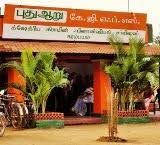
To conduct and respond to this assessment, KGFS uses an evolving framework of:
- Plan (for future aspirations: education, marriage, housing, acquisition of land or business asset etc.)
- Grow (through investing business from either loans or savings)
- Protect (through life, livestock and accident insurance products)
- Diversify (through investing in a range of assets and avoiding concentration)
Wealth Managers are trained to discuss and probe their customers’ plans and financial needs. On the basis of this, they fill out a comprehensive form which is then uploaded into the KGFS wealth management system to identify which of KGFS’s range of 14 products to be sold to clients. KGFS is aware that the initial data collected may not be very accurate, but it is the conversation about financial aspirations and the products that help customers realise their plans that enables a process of personalised financial counselling. Customers often start with a single credit product to test KGFS and its intent, but unsurprisingly, the follow-up conversations often yield increasingly accurate data and more opportunities to sell products. But the Wealth Managers are not assessed on the basis of the products they sell but rather the financial well-being of their customers – as measured by their net assets and the level to which these are appropriately protected and diversified.
MicroSave continues to work on alternative approaches to financial education – through front-line staff, agents, group leaders and other opinion leaders, and by integrating financial education into the product strategy. This strategy includes opportunities to get rapid and regular feedback and experience of using the product at low or no cost; and, of course, product marketing.
Financial inclusion: Success is in the details
Rajesh Gupta, a small tea shop owner in Madhubani, Bihar does not feel financially included yet.
He has a bank account, but his card does not work in the branch ATM of a rival bank and his designated local bank agent is often unable to fulfill his and others’ cash-in/cash-out needs. (The agent has insufficient cash on hand, or his shop is closed, or he is unavailable.) Rajesh must then walk/travel to another village and back, spending around 2 per cent extra in some cases simply because banks, telecom operators, IT servers and other key elements that enable money transfer from Place A to Place B cannot or will not cooperate among themselves to provide Rajesh with interoperable services which are not dependent on one bank, telco, or agent network aggregator.
“Paisa nikalne gaye toh mana kar diya, bole paise nahi hai. Yeh theek nahi hai. Isse jaldi theek karna chahiye”; [I went to the agent to withdraw, but he denied (me), saying he does not have cash. This is not right and must be fixed soon], says Rajesh. Others interviewed for MicroSave’s research paper on interoperability (published last year) would certainly agree with him.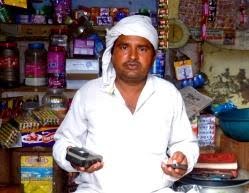 Financial inclusion—access to formal savings, credit, transaction, and insurance accounts at an affordable cost to three-quarters of the world’s poor—is an ambitious undertaking and its success hinges on such details as easy, secure interoperability.
Financial inclusion—access to formal savings, credit, transaction, and insurance accounts at an affordable cost to three-quarters of the world’s poor—is an ambitious undertaking and its success hinges on such details as easy, secure interoperability.
Success so far in India, a country where almost half the 1.2 billion population remain without the formal banking services, has been mixed in the past six years. The money for these financial services has to start somewhere, so the Reserve Bank of India (RBI) chose G2P government disbursements via mandatory No Frills (NFA) savings accounts for low-income beneficiaries in rural areas as one of the initial drivers.
One of the “frills” left out is an ATM withdrawal card. Other reasons why and how these welfare payments and their linked accounts have either failed or created a whole new set of problems, is nicely summarised in a recent MicroSave report on the impetus for UIDAI.
(A brief aside here for those who aren’t sure what UIDAI[1] is. The UID (Unique Identification) or Aadhaar as most Indians refer to both the 12-digit number and identity card, is a federal program to ensure proof of identity and residence for all Indians, including the many currently without formal papers. For substantive details, please see the government’s white paper on this initiative—or, more fun/fewer details, the profile of Nandan Nilekani, the software billionaire and creator of the world’s largest biometric database.)
Accurate customer authentication via UIDAI is obviously essential for banking security, overall trust in the system, and interoperability. But card distribution is moving forward fitfully—not so surprising for the world’s second most populous country with limited infrastructure in poor, rural areas — and the Aadhaar enabled payment system, linked to those cards, depends on standardisation and compliance with the bank’s core banking system, NFS (the national financial switch), and the NPCI (National Payments Corporation of India).
Yes, too many acronyms, but nevertheless critical pieces to fixing what Rajesh in Madhubani and the ~103 million other No Frills Account customers who can’t use bank branches, ATMs, and other bank’s agents because their account was opened on an incompatible server care about.
Another deterrent to untangling this mess are the banks. They would prefer to be seen as working hard to solve the vexing IT and logistical issues noted above. But many understandably also worry about:
- Costs and profitability (sending money anywhere, not “intra” is obviously going to require more time, technology, people, and security);
- Competition (what if their customers like the other bank or telco services better and defect?)
- Their business correspondent networks. (These are the agents the banks hire to manage cash-in/cash-out services in areas without branch or ATM access. The banks and their network managers also enjoy, and probably see no reason to share, the ~Rs.75 billion+ or approximately $1.3 billion revenue streams their agents provide for them via internal remittances and other money transfers ;
- Money lost in inter-bank transit (“leakage”, famously unreliable IT servers, vulnerable data connections for inter-bank EFTs, and inevitable human errors can incur even higher costs, and both banks have to guarantee these transfers).
The real snag, however, is not the banks or faulty IT or incompatible networks and payment systems. “Financial inclusion in India is still characterized by a multiplicity of efforts in silos,” notes one MicroSave senior analyst. She goes further to explain the current piecemeal approach is increasingly the real obstacle to “scale” (enough people sending, receiving, and saving enough money via these various financial services).
Unfortunately, without sufficient scale, no bank, network operator, utility provider, government agency, and other potential participants are ready to commit seriously to working together.
When we bring all these disparate pieces together and begin to coordinate branchless banking, mobile money services, G2P disbursements, and third-party payments, we will have more compelling incentives for interoperability, which apparently can work elsewhere. Mobile operator collaboration with each other and with banks is already a reality in Kenya, gaining impressive success in Indonesia, and moving forward in Pakistan where banking regulations encourage the “many to many” model. If it can happen in Pakistan, it can happen in India.
[1] Unique Identification Authority of India.
Agriculture Value Chain Financing: Role of MFIs
MFIs can play an important role in agriculture value chain financing. In this video, MSC’s Senior Specialist Raj Kumar explores the possibility of MFIs performing important functions in the value chain by offering agriculture financing and risk management products for the farmers. He also highlights some of the key considerations and risks if the MFIs were to get into this line of business.
